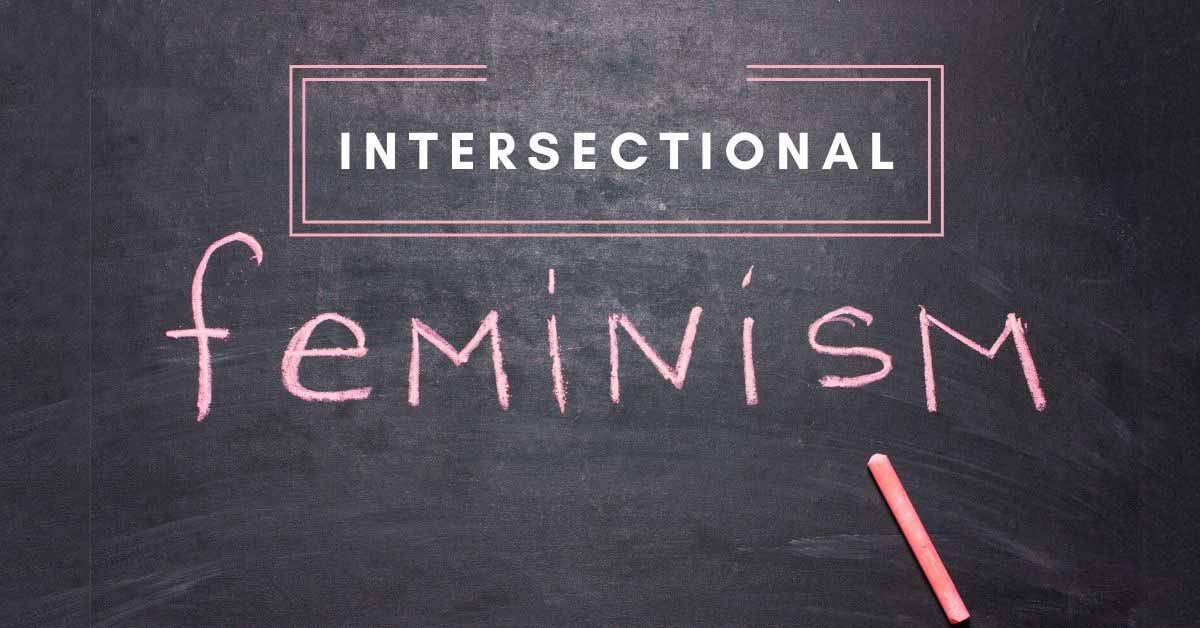Home > Lifestyle > Empowerment > Intersectional Feminism: What We Ought to Know


So, we’re all feminists here (if not I think you’re in the wrong place), but is our fight truly equal? As we fight for equality across the world and in our own societies, do we fight for everyone? Are our bookshelves stocked with diverse and inclusive literature? Overall, is the feminism we support intersectional?
“the theory that the overlap of various social identities, as race, gender, sexuality, and class, contributes to the specific type of systemic oppression and discrimination experienced by an individual
“the oppression and discrimination resulting from the overlap of an individual’s various social identities
There are many branches of feminism that we look at into philosophical, political, educational and sociological discourses. Through literature, art, the media to objectification, oppression, patriarchy and discrimination; feminist theories extend into most every other aspect of human conversation.
“As a child of immigrant parents, as a woman of colour in a white society and as a woman in a patriarchal society, what is personal to me IS political.” – Mitsuye Yamada
And it has done, for longer than many might think. Plato advocated the ‘natural capacities of women to govern and defend Greece equal to men. Ancient Rome saw a large protest of the Oppian Law by women which was successfully repealed.
In the 15th century, writers like Mary Wollstonecraft began to fight for better equality between the sexes.
First wave feminism started in the 19th and 20th centuries with the aims of fighting legal inequality and addressing women’s suffrage. In the UK, in 1918, women’s suffrage won the vote, but this was only for women over 30 who held property, or were married to a man who did, householders and had graduated a British university. In 1928, all women over the age of 21 were allowed to vote on the same terms as men.
We know the names of the Pankhurst’s, but what about the women of colour who fought for the right to vote?
A large portion of feminist theory and history, focuses on white, middle class, cis women, thus named ‘White Feminism’. And most of the feminism we learn about and the women we discuss are just that.
In other words, it’s a form of feminism that doesn’t actually help all women.
And if we’re not helping all women, what are we doing?
Acknowledging the variances of class, caste, income, education, language and age as well ethnicity, religion, sexuality and culture, intersectional feminism addresses the differences in discrimination that different women, around the world, face.
“Some problems we share as women, some we do not. You fear your children will grow up to join the patriarchy and testify against you; we fear our children will be dragged from a car and shot down in the street, and you will turn your backs on the reasons they are dying.” – Audre Lorde
Intersectional feminism has been largely credited to Kimberle Crenshaw’s work in 1989 in which she writes: “the intersectional experience is greater than the sum of racism and sexism, any analysis that does not take intersectionality into account cannot sufficiently address the particular manner in which Black women are subordinated.”
Different discriminations can weave together and interact, overall amplifying gender-based discriminations. Consequently, this overlooking of experiences mean that people are excluded from feminist theories and fights because their experiences do not align with the others. Recognising where and how this overlap occurs, is crucial to achieving equality for everyone.
First and foremost, recognise your privilege.
As a white, straight, middle class woman, my experiences with gender discrimination differ hugely to other women. I talk about gender roles; patriarchal traditions and how they impact us. But there are women in the world facing far different issues. For example, GFM, forced marriages, sexual violence, abuse and countless other atrocities.
Even to women in my own society, there are differences. Differences such as education, class, income, sexuality and gender identity.
When we recognise our own privilege, we can begin to unlearn our prejudices.
We begin to educate ourselves and learn how to properly fight for and support all women across the world. To listen and be an active ally in our efforts for full equality. I’m no expert on this. Admittedly, I’m still learning, but learning is the start for everyone.
“So, one of my responsibilities, as a white, cis-gendered woman, is to learn how to be a traitor to the ‘joys’ of patriarchal culture that I experience, however unconsciously.” – Erin Wunker
Learn, listen and act.

-


Dr Singh is the Medical Director of the Indiana Sleep Center. His research and clinical practice focuses on the myriad of sleep.

Understanding PMS symptoms without menstruation Before we proceed with explanations, we wanted to clarify why having PMS symptoms is not the same as being diagnosed with PMS. As we’ve already mentioned, PMS stands for premenstrual syndrome. This syndrome is diagnosed

Understanding PMS vs. pregnancy symptoms Before we proceed, please keep in mind that during a normal menstrual cycle, you may experience symptoms; however, they should be mild and not interfere with your daily life. This is a common and normal

The importance of the follicular phase While it may not be the most fun part of the menstrual cycle, the follicular phase plays a key role in your reproductive health. As we mentioned, the follicular phase begins on the first
Privacy Overview
| Cookie | Duration | Description |
|---|---|---|
| cookielawinfo-checkbox-analytics | 11 months | This cookie is set by GDPR Cookie Consent plugin. The cookie is used to store the user consent for the cookies in the category "Analytics". |
| cookielawinfo-checkbox-functional | 11 months | The cookie is set by GDPR cookie consent to record the user consent for the cookies in the category "Functional". |
| cookielawinfo-checkbox-necessary | 11 months | This cookie is set by GDPR Cookie Consent plugin. The cookies is used to store the user consent for the cookies in the category "Necessary". |
| cookielawinfo-checkbox-others | 11 months | This cookie is set by GDPR Cookie Consent plugin. The cookie is used to store the user consent for the cookies in the category "Other. |
| cookielawinfo-checkbox-performance | 11 months | This cookie is set by GDPR Cookie Consent plugin. The cookie is used to store the user consent for the cookies in the category "Performance". |
| viewed_cookie_policy | 11 months | The cookie is set by the GDPR Cookie Consent plugin and is used to store whether or not user has consented to the use of cookies. It does not store any personal data. |
